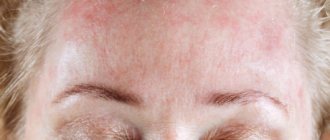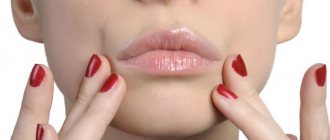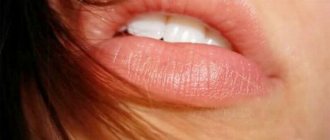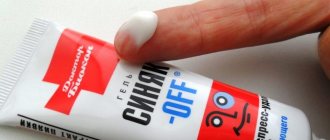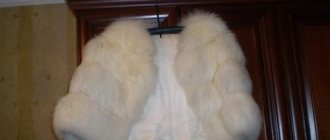An excellent alternative to the sensational black masks from China was the discovery of our citizens. This is a mixture of PVA glue and activated carbon. It gets rid of blackheads just as well. How to make a mask from PVA glue and activated carbon
A mask against blackheads with activated carbon and PVA glue is a godsend for home cosmetology .
It is easy to use and has virtually no side effects.
Myth or reality?
The process of cleansing the face of enlarged pores and blackheads takes quite a long time.
This is a labor-intensive and costly procedure , until recently performed only in cosmetologists’ offices and in expensive salons.
However, with the help of simple means this action will become accessible to everyone, and at home.
The cost of a cleansing mask made in a salon can reach several thousand rubles, while a mask made at home is very inexpensive .
Its effect surpasses even hardware facial cleansing and chemical peeling - because the effect of its use is visible almost immediately, and there is no characteristic redness and burning.
A mask made of activated carbon and PVA glue is recommended for everyone who has skin problems - inflammation, acne, blackheads, and enlarged pores .
Will a mask made of charcoal and glue bring much benefit?
You can easily get rid of blackheads on your face. It’s hard to even think that PVA glue makes an excellent mask. It does not contain toxins, so it will not cause any harm to the skin. Since the glue can dissolve in water, it is quite easy to wash it off.
A miraculous mask made from charcoal and glue.
Photo: Getty
To prepare your face for using this product, before using it, do a steaming procedure with a warm towel or regular steam. As a result, the pores open. Then glue is applied to the skin with black dots. After some time it will dry out. After this, the film can be removed.
You can quickly get rid of comedones if you use a mask made from PVA glue and charcoal. Before squeezing them out, you should also steam your face. Comedones are easily squeezed out using available means. Next, we disinfect the instrument so that no germs can penetrate the skin. When squeezing, no pain is felt. If it appears, then you need to stop.
Effective skin lightening is done using activated carbon with PVA glue. Activated carbon is sold in tablets without a prescription. How to make a mask?
1. To use it, you need to crush the tablets.
2. Mask capsules should not be used due to the large granules.
3. Glue is added to the charcoal powder to obtain a thick slurry.
4. Then the product is applied to the skin of the face.
5. After the mixture has completely dried, you can wash it off.
Blackheads often appear on the bridge of the nose, so you should apply the prepared paste to this area. You can then continue applying the mixture to your cheeks, forehead and chin.
Activated Charcoal for Acne Treatment: Truth and Myths
More details
Activated carbon is perfectly used in cosmetology.
A mask made of charcoal and glue effectively eliminates acne, excess oil and can be used to whiten teeth. Glue is added to the mask so that it takes on the appearance of a film that begins to absorb every black dot. When the mask dries, it is removed along with the blackheads.
When you peel the mask off your face, each black dot comes out along with the glue. It may not be possible to get rid of small blackheads right away, but if you use this remedy periodically, all problems will be solved over time.
It is believed that PVA is completely safe, but this does not mean the absence of individual intolerance. It is recommended to go through the allergen text.
www.wday.ru
Preparation for the procedure
All instruments used should be treated and , this will prevent the occurrence of inflammatory processes.
To achieve the greatest effectiveness, before use, the face should be cleaned and the pores should be opened.
To do this, steam your facial skin and then cleanse it with a toner.
Similar Recipes
There are various recipes for these masks, their components may vary depending on the availability of the necessary components. Some of the funds are interchangeable .
You can learn how to properly use black masks from China from our article.
Replacing glue
So, for example, in the absence of PVA glue, you can use chicken protein.
It has all the necessary pulling properties, and also has a good bactericidal effect .
To prepare this mask, you need to take the white of one chicken egg and add crushed activated carbon to it. Mix the resulting substance until smooth.
Apply a thin layer to the face, leave for a few minutes, then remove the film and rinse with warm running water.
The second product that can be used in the absence of glue is gelatin. It is also a universal base for many masks. Gelatin must be diluted a little with water and then melted in the microwave.
Cool the resulting mixture to room temperature to avoid burns .
To prepare this mask, you first need to prepare a gelatin solution and then add charcoal to it. Along with the removal of the film, the skin will also be cleansed.
Alternative to coal
Activated charcoal can also be used along with sea salt, this will not only help get rid of blackheads, but also reduce swelling and redness.
Sea salt has a pronounced anti-inflammatory effect, as well as an antimicrobial effect.
To prepare this mask, you need to take a tablespoon of crushed activated carbon, the same amount of sea salt, and if desired, add a few drops of essential oil .
It is useful to use tea tree oil, or lavender and rosemary oil . Then dilute the resulting composition with boiled water until smooth.
Apply the mask to the face with light movements, leave for 10-15 minutes, if necessary, you can increase the time to half an hour, and then rinse with cool water. The mask can be applied both to the entire face and to spots .
How to use PVA glue for blackheads
The first rule that must be followed before applying any mask is thorough cleansing of the skin .
To use PVA for comedones, you need to do the following:
- First, you need to wash your face using a special gel or milk according to your skin type.
- Then you need to steam your face over a steam bath (you can brew chamomile or add your favorite essential oils to clean water). This will open the pores as wide and quickly as possible.
- Now shake the bottle thoroughly and apply PVA glue to the areas of blackheads. Should be applied with cotton swabs.
- After complete hardening, you can remove the film.
- There should be no pieces of glue left on the face; the mask must be removed completely. You can use antiseptics - chlorhexidine or alcohol-based lotion.
- After everything, you need to wash your face with cool water to close the pores. Apply moisturizer.
A mask against blackheads with PVA glue should be used 1-2 times a month.
Black mask with PVA and activated carbon
, black masks are very popular in the fight against comedones . They are bought in cosmetic stores and ordered online. Many people wonder how to make a black mask against blackheads at home from PVA glue.
It should be noted that the recipe is a success. Although it does not apply to a procedure that has undergone hundreds of tests and received the approval of cosmetologists.
Activated carbon has been used in cosmetology for a long time. It has been noticed that it reduces skin oiliness and helps cope with acne and pimples.
You can make a mask from PVA glue and activated carbon for blackheads. It is easy to prepare even at home:
- Take 3 charcoal tablets and grind them in a bowl to a powder.
- Cleanse and steam your face.
- Now you need to add PVA glue to the powder and mix thoroughly until it all turns into a thick paste.
- Next, the mask must be immediately applied to problem areas in a thick layer.
- After complete hardening, the film must be removed.
- At the end of the procedure, wash your face and moisturize your skin.
When the mask is peeled off, the black dots along with the film come out. In one application you can get rid of small comedones, large ones will not disappear immediately.
Just do not use a mask with PVA glue more than 2 times a month .
Video: MASK FROM BLACK DOTS. WHAT'S BETTER? GELATIN or PVA GLUE?
Does PVA help with comedones? It’s difficult to give a definite answer, but according to reviews, such masks perfectly get rid of blackheads. Many representatives of the fair sex have already tried them on themselves and were satisfied with the result.
Be beautiful!
Contraindications and frequency of use
The main contraindication is intolerance to any components. To avoid allergic reactions, it is necessary to conduct a skin sensitivity test before using the mask.
To do this, apply a small amount of the component to the crook of your elbow and wait 15 minutes, then rinse with water.
If redness or a strong burning sensation appears, you should postpone using this mask.
Masks made from activated carbon and PVA glue, as well as other components, should be used no more than twice a week .
Activated carbon and PVA glue
According to the know-it-all Wikipedia, PVA glue is a solution of polyvinyl acetate in water, with a plasticizer and special additives. It has virtually no smell and is easy to use - who would have thought! - for gluing materials to each other.
To prepare masks, it is recommended to use stationery non-waterproof PVA (PVA-K) or glue for children's crafts, which can always be relatively easily washed off with ordinary water if something happens. Hardening on the skin, the glue forms the very film that promises to pull our blackheads out of their homes.
In order for the mask to acquire the coveted black color and corresponding functions, crushed activated carbon and/or black cosmetic clay are added to the glue. You can use any clay, but black, of course, is much more suitable in color.
If using office glue for facial skin scares you a little, you can try replacing office PVA with BF medical glue.
It is still better to see the further process a couple of times than to read it a hundred and five hundred times on the Internet.
Recommendations
Rules for using a mask:
- The mixture can be prepared for several uses; the remainder should be stored in the refrigerator.
- Be sure to check the expiration date of the ingredients before preparing the composition.
- Apply the mask only at room temperature .
- If you have dry and flaky skin, use masks with caution.
You can learn how to make a face mask from activated carbon and PVA glue from the video:
Activated carbon mask for blackheads
YOU CAN ORDER ON THE OFFICIAL STORE WEBSITE
Activated carbon with gelatin
Here everything is somewhat more complicated, but not so scary, since instead of glue, the most common food gelatin is used. Much has already been written about this mask, even more has been said and quite a lot has been taken away.
Here, instead of activated carbon, you can also add any cosmetic clay or a mixture of cosmetic clay and activated carbon. There is also a version of this mask with dry chamomile ground in a coffee grinder into the finest dust, added to the same activated carbon and/or cosmetic clay.
To enhance the effect of the mask, you can lightly steam the skin before applying it. But you shouldn’t do this the first time you use it. Also, this mask, like all film masks, is not recommended for use on damaged, inflamed, burned skin, after chemical peels and other traumatic effects.
The most important thing in the current beauty realities: do not apply all these masks to your eyebrows, otherwise there is a risk of being left completely without eyebrows or seriously spoiling their architecture.
If the thought of wheat germ, for which the advertised marketing mask is famous, haunts you, add a couple of drops of wheat germ oil or any other, not very fatty oil to your recipe. Grapeseed oil, for example, sounds just as cool, doesn't it? However, apricot kernel oil is also quite suitable.

